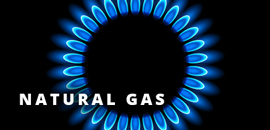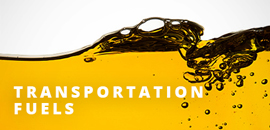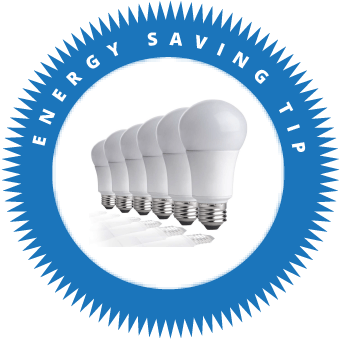PROGRESS REPORT
Major equipment upgrades were planned and completed this year at the Austin Headquarters complex. As we evaluate the success of these projects, we will re-evaluate and consider additional projects that will improve the comfort and operation of this building while reducing energy consumption.
Cooling Tower - Evapco two-cell tower AT-217-3J14 and two new 15hp ABB VFD’s were installed in July of 2022. Roofing material replacement for buildings A,B and C of the Austin Headquarters Complex will be completed by Dec. 2022. The roofing materials replacement is PVC (Polyvinyl Chloride).
We are systematically replacing outdoor lighting in Texas Parks and Wildlife Department (TPWD) facilities with dark-sky friendly alternatives that are also energy efficient. Along with upgraded outdoor lighting, when possible, indoor lighting is also being upgraded with efficient LED alternatives. Occupancy sensors and timers are also being installed, when possible, to reduce the time lights are on when not being used.
The agency operates many small buildings at various sites with public access around the agency. It is difficult to assess and evaluate small efficiency upgrades due to the size and public use of these facilities. Rather than audits, TPWD finds many efficiency gains have been achieved through repair and continued investment in efficient equipment when maintenance is conducted. Additionally, when the opportunity for new construction occurs, the agency works to consider building efficiency as well as resiliency.
TPWD is considering the increased use of electric vehicles (EV), trailers, and recreational vehicles by visitors and is evaluating options to meet public demand at our public facilities. Many electric vehicle drivers are utilizing campground electrical outlets to charge their vehicles when camping overnight at state parks. As well, the increased number of trailers and RVs used for overnight camping places a strain on the energy capacity at sites. The agency has installed two EV charging stations and is in the process of upgrading the amp output of electrical outlets at campsites to accommodate for the additional energy use. These installations may increase energy demands for facilities and TPWD is considering these impacts as well.
GOALS
In accordance with Texas Government Code§447.009, TPWD has established goals to reduce our agency use of water, electricity, transportation fuel and natural gas by five percent utilizing fiscal year 2019 as our base year.
Usage in water increased by 23 percent in fiscal 2022 from 2019 baseline levels. There was a 14 percent increase in overall agency electricity use for 2022, compared to 2019 baseline usage. Natural gas usage decreased in fiscal 2022 by 5 percent from fiscal 2019 levels, meeting our goal of a five percent reduction by 2025 early by a couple of years.
Transportation fuel use is reported separately in the Texas Fleet System.
Visitation to public TPWD sites continues at the high levels seen throughout the duration of the pandemic. Around 10 million visitors were recorded at Texas State Parks in 2021 and 2022, which is a significant increase from the third-highest year of visitors – 2018 - which only saw 8.8 million visitors. As well, major construction projects at several TPWD sites and the opening of new facilities has also contributed to the higher usage of energy and water. Finally, the heat wave during the summer of 2022 accompanied by the worst drought in a decade had a huge impact on energy and water usage of TPWD sites and facilities.
| Utility | Target Year | Benchmark Year | Percentage Goal |
|---|---|---|---|
| Water | FY2025 | FY2019 | 0.05 |
| Electricity | FY2025 | FY2019 | 0.05 |
| Transportation Fuels | FY2025 | FY2019 | 0.05 |
| Natural Gas | FY2025 | FY2019 | 0.05 |
STRATEGY FOR ACHIEVING GOALS
TPWD is a conservation agency and resource conservation continues to be an agency priority. Capital construction and other new construction projects within the agency utilize current building code standards to increase facility efficiency. Sites undergoing minor repair are also encouraged to select the most efficient equipment when feasible, including efficient LEDs and high SEER HVAC systems.
Electricity
TPWD will aim to reduce net consumption of electric energy and natural gas in accordance with Health and Safety Code §388.005 through investment in energy efficient equipment and through behavioral changes. The agency has established goals to improve data collection and tracking methods to monitor, report, and evaluate energy efficiency and conservation efforts. This effort is in addition to TPWD’s current contract to purchase renewable energy for all of its facilities located in deregulated utility areas.
Water
Water conservation is particularly important to TPWD because a lack of water resources has a severe and direct impact on agency operations. The agency aims to decrease water consumption through leak repair, rainwater catchment and investment in water conserving fixtures.
In addition to traditional water services for visitors (e.g., drinking water, bathing facilities), TPWD uses water for cleaning, maintenance, wetland enhancement and fish hatcheries. Many of our facilities provide wastewater collection, water distribution and stormwater diversion services. The provision of these services add complexity to evaluating water consumption and conservation efforts.
TPWD obtains water from a variety of nontraditional, municipal sources. Most of these sources (e.g., water right permits, groundwater, well water, contracted supplied water) are not metered or captured in current utility management systems. Water conservation can be a challenge, because consumption is not measured through traditional means and can be an unknown variable.
In some areas, TPWD is shifting water use from non-traditional sources to municipal water service, helping to track use through traditional billing methods. Additionally, the agency is working to develop a method to collect data on water usage from non-metered sources. Although metering and documenting usage from these non-traditional sources is difficult, it will help TPWD identify how much water is being consumed. This in turn will help the agency identify changes in consumption and compare usage amounts, which could lead to the identification of conservation opportunities and improved management of the resource.
Natural Gas
Many TPWD facilities do not have access to natural gas. When possible, facilities will utilize more efficient natural gas equipment.
Transportation Fuel
TPWD operates a fleet of over 2,500 vehicles, 2,300 trailers, 900 boats and 1,300 utility transport vehicles throughout the state in accordance with the Texas State Vehicle Fleet Management Plan and Government Code §§2158 and 2171.
IMPLEMENTATION SCHEDULE
TPWDs proposed timeline for implementing the utility and cost reduction measures discussed in this plan are subject to legislative biennium funding. Many of our efforts are established and evaluated regularly. However, projects that result from an unanticipated failure may be addressed more quickly and improve utility efficiency.
AGENCY FINANCE STRATEGY
TPWD will contribute to its energy use reduction goals through new construction of more efficient facilities. As new buildings are constructed to replace older, less-efficient ones, overall agency utility use will decrease through use of higher energy and water efficiency codes and standards. Large new construction projects are funded through legislative appropriation. Due to the broad number of ongoing construction projects, estimated costs are unavailable and specific project information may be obtained upon request.
In addition to large construction projects, many minor repair projects are planned for implementation over the next five years. Among those projects include many lighting and HVAC retrofits. The Minor Repair Program supports energy use reduction so that sites maximize use of their operating budgets. These efforts include supporting lighting retrofits, especially where older, inefficient fluorescent lighting exists and replacing inefficient outdoor lighting with LED dark-sky-friendly alternatives. Although funds for minor repairs are limited and needs are vast, the program targets projects that produce utility savings to maximize benefits to sites. Overall savings from investing in more efficient equipment are realized as the device continues to operate over time.
Through our most recent deregulated electric utility contract (2020-2030), TPWD received an incentive that will lead to the installation of $250,000 worth of solar photovoltaics at TPWD facilities over the contract term.
The Texas Commission on Environmental Quality (TCEQ) provides several transportation and clean air related financial incentive programs. TPWD has applied for funding assistance through these programs with the installation of EV charging station infrastructure. Additionally, local utilities may provide financial support for efficiency upgrades in energy and water. Over the past year, TPWD has participated and received incentives for installing energy efficient equipment at its Austin Headquarters facility and at the McKinney Falls State Park Visitor Center.
EMPLOYEE AWARENESS PLAN
TPWD staff are engaged and interested in learning about efforts to improve our agency. This includes learning about our work to reduce energy consumption and improve sustainability. Employees may learn about opportunities, accomplishments and ongoing efforts through a variety of programs and communication tactics.
TPWD staff deployed a Sustainability Survey to all TPWD sites and facilities to gain a baseline of employee awareness of sustainability projects at their specific sites, identify areas of concern to better focus resources, and to improve data collection of energy and water management projects.
The agency intranet (WILDNet) includes information on energy, water, waste, transportation, and other areas to help staff make sustainable choices at work and at home. There are several pages with the various initiatives and events that our branch supports including: energy efficiency, water conservation, waste mitigation, clean air, and sustainable land management. We are also developing training webinars that will be accessible from our WILDNet pages. TPWD also publishes articles pertaining to energy and water management on InsideTrack, a blog located on WILDnet that is available to all agency staff.
The Green Teams continue for Austin Headquarters, in each of the six State Park regions, and more are being developed in the other divisions in the agency. These Green Teams are a way to share knowledge, identify areas of concern, and promote information across the agency for better energy and water management. Notes on each participating Green Team are collected and a summary of sustainable actions that the site is taking are shared on the WildNet.
At our headquarters complex in Austin, TPWD participates in the Austin Energy Load Coop Program. Through this program, we are incentivized to reduce our energy demands on targeted days when the electrical grid experiences its highest demand. To reduce energy use through behavioral efforts, during these events, we notify staff and ask them to curb energy use wherever possible.






